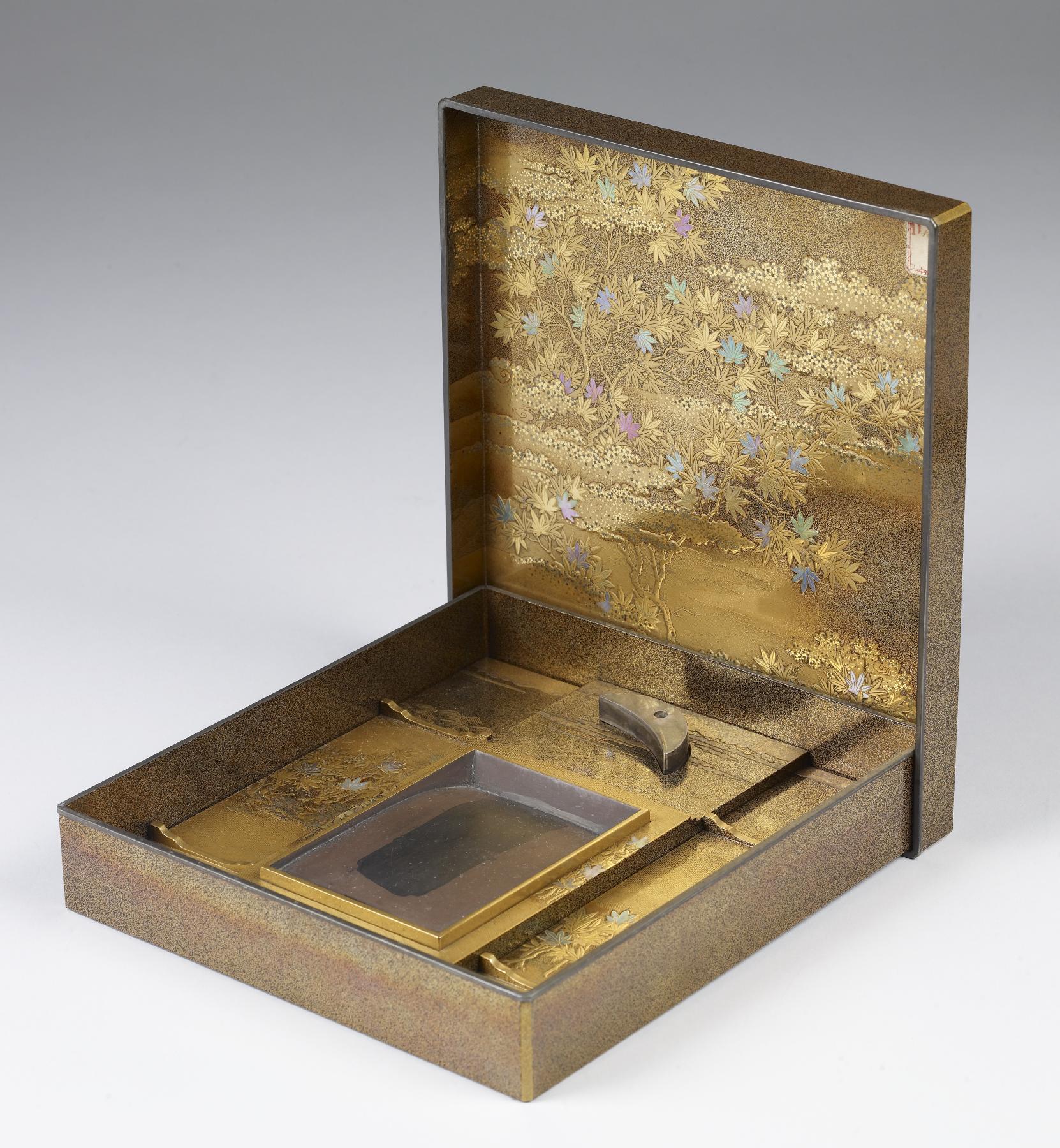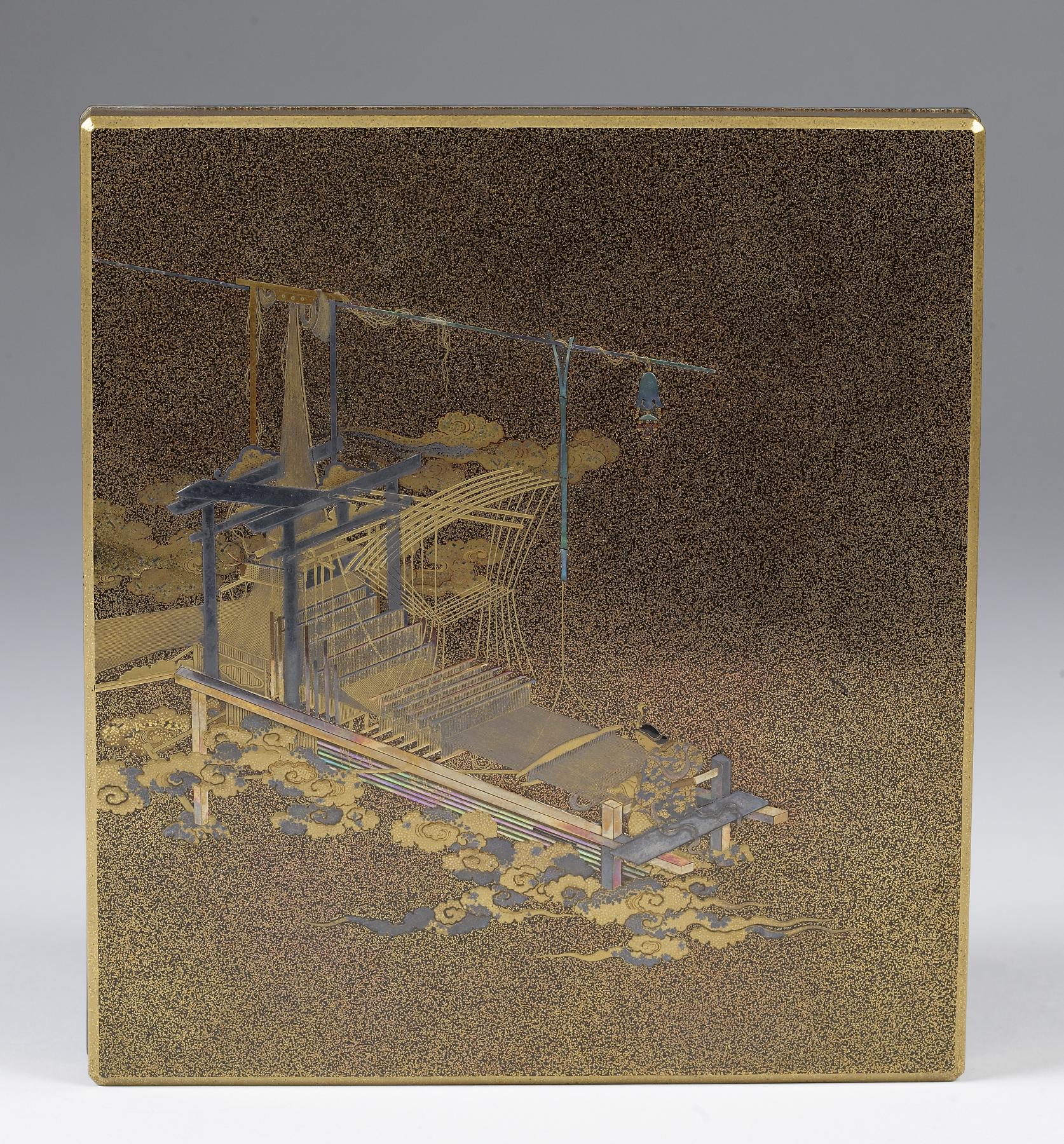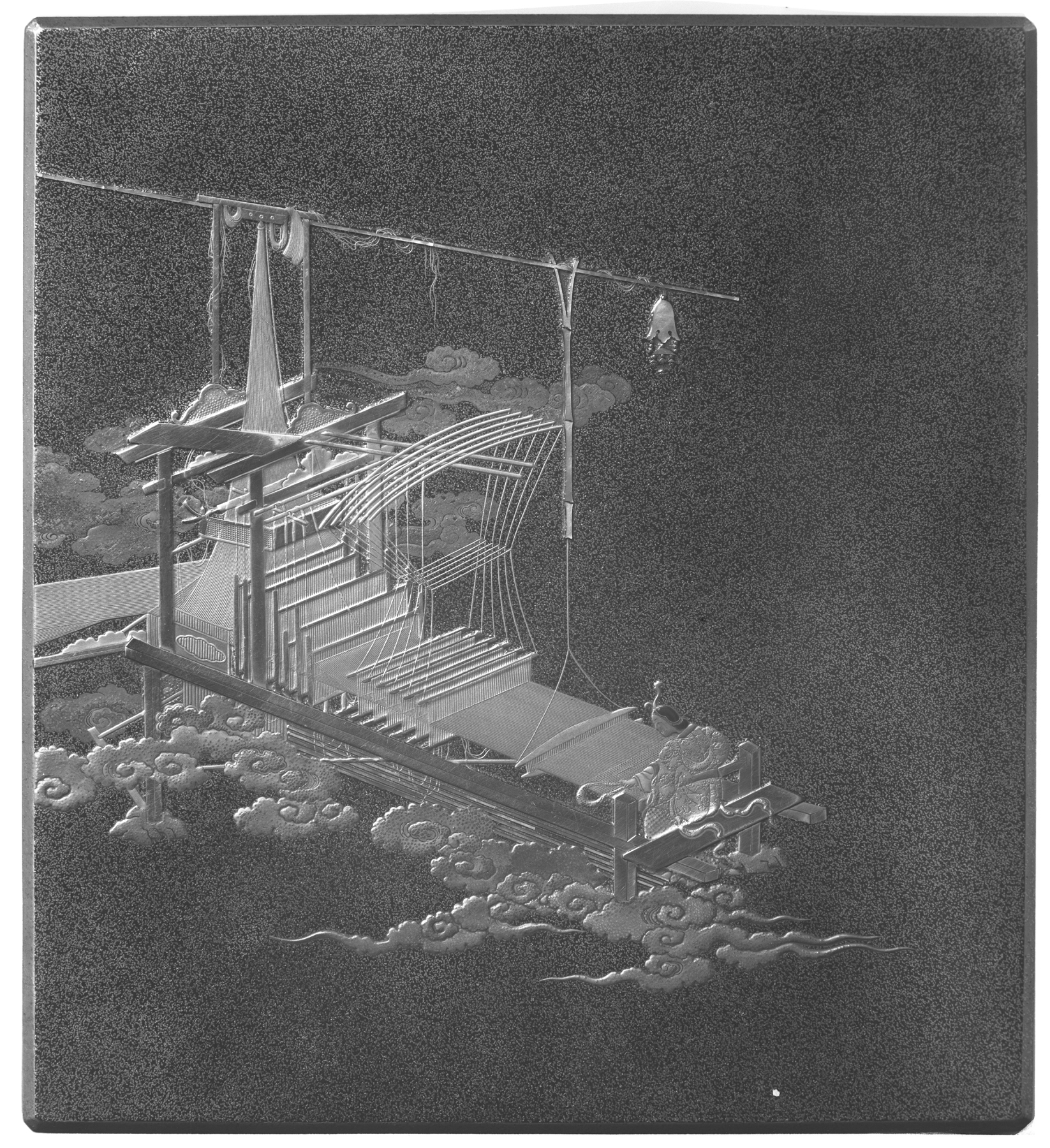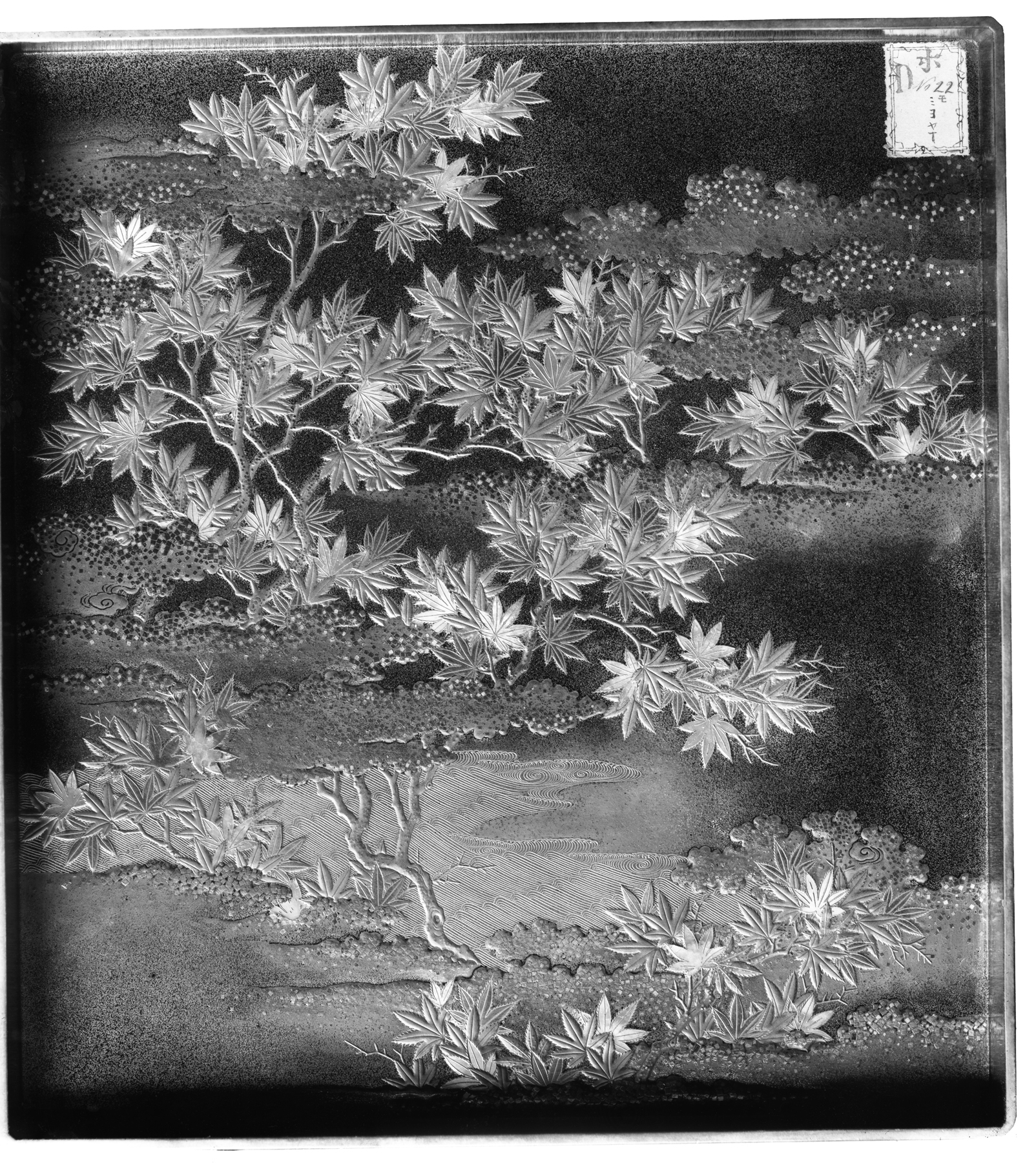Writing Box with weaving maiden at her loom on clouds
The mythological figure Orihime, the daughter of the Sky King, is known in Japan as the Weaving Maiden. According to legend, the king selected a herdsman, Kengyu, to marry Orihime. On her wedding day, the bride indulged in such frivolity that her father regretted his choice. He exiled Kengyu to the other side of the Milky Way, and Orihime was forced to spend her life weaving at her loom. The lovers were permitted to meet only once a year, on the seventh day of the seventh month when the Milky Way is spanned by a bridge of magpies. Their union is celebrated on July 7 at the festival of Tanabata.
Provenance
Provenance (from the French provenir, 'to come from/forth') is the chronology of the ownership, custody, or location of a historical object. Learn more about provenance at the Walters.
Kanesabro Wakai, Centennial Exhibition, Philadelphia, 1876; William T. Walters, Baltimore, 1876, by purchase; Henry Walters, Baltimore, 1894, by inheritance; Walters Art Museum, 1931, by bequest.
Exhibitions
| 2011 | The Art of Writing Instruments from Paris to Persia. |
| 2009-2010 | Industry of Perfection: The Refined Beauty of Japanese Cloisonne Enamels. The Walters Art Museum, Baltimore. |
Geographies
Japan (Place of Origin)
Measurements
Lid H: 7/8 x W: 7 3/4 x D: 8 1/2 in. (2.22 x 19.69 x 21.59 cm); Bottom H: 1 3/8 x W: 7 3/8 x D: 8 1/4 in. (3.49 x 18.73 x 20.96 cm)
Credit Line
Acquired by William T. Walters, 1876
Location in Museum
Not on view
Accession Number
In libraries, galleries, museums, and archives, an accession number is a unique identifier assigned to each object in the collection.
In libraries, galleries, museums, and archives, an accession number is a unique identifier assigned to each object in the collection.
67.293










